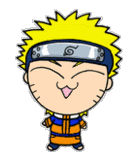 Osamu Tezuka, who anime and manga fans dub him as the father of manga and anime was one the earliest people behind the development of anime. His anime characters were energetic and emotional and his stories lasted for hundreds of pages with active pictures as well as words. The most noticeable feature of anime, which is the large eyes, is the design pioneered by him, using Disney’s cartoons as reference. The design allowed for a wide range of emotions which lead to the apparent differences between Japanese animation and other places. Huge eyes, brightly colored hair, well-endowed female characters, and exaggerated emotional expressions and gestures are typical of anime style.
Osamu Tezuka, who anime and manga fans dub him as the father of manga and anime was one the earliest people behind the development of anime. His anime characters were energetic and emotional and his stories lasted for hundreds of pages with active pictures as well as words. The most noticeable feature of anime, which is the large eyes, is the design pioneered by him, using Disney’s cartoons as reference. The design allowed for a wide range of emotions which lead to the apparent differences between Japanese animation and other places. Huge eyes, brightly colored hair, well-endowed female characters, and exaggerated emotional expressions and gestures are typical of anime style.Anime characters have been largely influenced by the styles of Disney. Not all characters have the huge eyes and tiny noses and mouths that most people think of, but for the most part, characters are drawn to look more western. Some characters sometimes shrink down really small and have exaggerated features. This is known as 'super-deformed'. It often happens when the character has had a sudden surprise, fright, or other strong emotion. When a guy gets a nosebleed, it's usually around a girl, and means the guy is attracted or turned on by her. It’s basically the same effect as when a girl blushes. A character will get a sweat-drop in reaction to another character or a situation where they don't quite know how to deal with it at first. For example, this can be a reaction to feeling nervous, frustrated, surprised, or confused. Some characters seem to close their eyes and squint when they smile. This is what is known as 'fox eyes'. This indicates a greater degree of happiness than just a plain smile. Some characters are even designed to always have these 'fox eyes' and can sometimes mean they are mischievous, like the fox.
Tezuka's black and white anime Tetsuwan Atom (1958), or Astro Boy in English, was the first
 regular anime to be have a formal set of characters. It centered around a robot boy who has an atomic heart. He is rejected by his creator and sold to a circus. Through the teaching of Dr. Elfun, the robot boy fights against evil for the protection of all mankind. This anime was adapted from his manga of the same name. During the 1970s, anime developed further, separating itself from its Western roots, and developing unique genres such as mecha. Notable shows in this period include Lupin III and Mazinger Z. During this period several filmmakers became famous, especially Hayao Miyazaki and Mamoru Oshii.
regular anime to be have a formal set of characters. It centered around a robot boy who has an atomic heart. He is rejected by his creator and sold to a circus. Through the teaching of Dr. Elfun, the robot boy fights against evil for the protection of all mankind. This anime was adapted from his manga of the same name. During the 1970s, anime developed further, separating itself from its Western roots, and developing unique genres such as mecha. Notable shows in this period include Lupin III and Mazinger Z. During this period several filmmakers became famous, especially Hayao Miyazaki and Mamoru Oshii.In the 1980s, anime was accepted in the mainstream in Japan, and experienced a boom in production. The start of the Gundam franchise and the beginnings of Rumiko Takahashi's career began in this decade.
The 1990s and 2000s saw an increased acceptance of anime in overseas markets. Akira and Ghost in the Shell (1995) became famous worldwide. Series like Neon Genesis Evangelion and Cowboy Bebop were popular in Japan and attracted attention from the West. Spirited Away shared the first prize at the 2002 Berlin Film Festival and won the Academy Award for Best Animated Feature in 2003, and Innocence: Ghost in the Shell was featured at the 2004 Cannes Film Festival.
Basic Anime Terms







No comments:
Post a Comment